Editor’s note: This story was originally published by our colleagues over at Hagerty US. But the insight provided by the author, Tim Stevens, into the proliferation of touchscreens is likely to answer the questions many drivers have about the tech – no matter where they live.
Buying a new car? I hope you like touchscreens – modern interiors are full of them. Blame Tesla or Apple or the entire Zoomer generation, but the trend of shoving more and more functionality into a capacitive display isn’t going away.
The death of haptics, muscle memory, and good ol’ tactile involvement shouldn’t be taken lightly, and you probably know that touchscreens have significant drawbacks when used in a vehicle interior. But there are also some real benefits. Let’s look at the positives and negatives and get to the bottom of the subject: are the days numbered for the humble physical button?
More screens – but why?
I spoke with leading experts in the field, from user-experience (UX) designers to manufacturer reps and analysts. Almost all of them singled out one factor in touchscreen proliferation: cost.
Connor Hill, the global design lead at Toyota Connected, Toyota’s development lab for digital mobility, told me: “In terms of pure cost, fewer switches to produce equals savings to the company and customer.” Hill offered a caveat, noting the pessimism of his statement, but his view is definitely realistic.
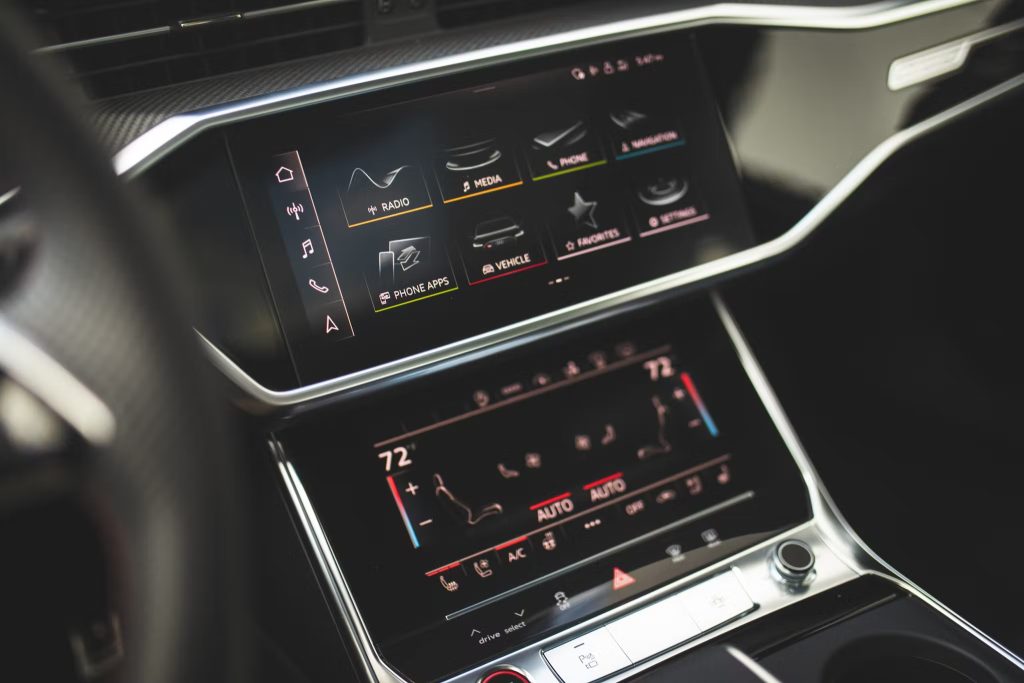
Another major factor is the growing percentage of consumers who genuinely want a vehicle with screens. Drew Meehan is the senior product manager and a former UX designer at mapping and navigation company TomTom. “People like touchscreens,” he said, “and see them as being modern and relatable, because they echo their consumer devices.” Meaning: phones. “For OEMs [original equipment manufacturers], this is a win-win scenario. They can save money while simultaneously providing an experience that’s perceived by consumers as more premium, more modern, and more approachable than traditional in-car systems, like rotary knob controllers.”
Finally, there’s flexibility and the ability to grow. In an era of over-the-air software updates, where a download tonight might give your car fun new features for tomorrow’s commute, allowing the user experience to evolve is key. “Over the air updates impact software,” said Christopher Schreiner, the product director of UX innovation at consulting firm Strategy Analytics. “Having all features software-driven behind a touchscreen provides greater ability to fix bugs or provide improvements.”
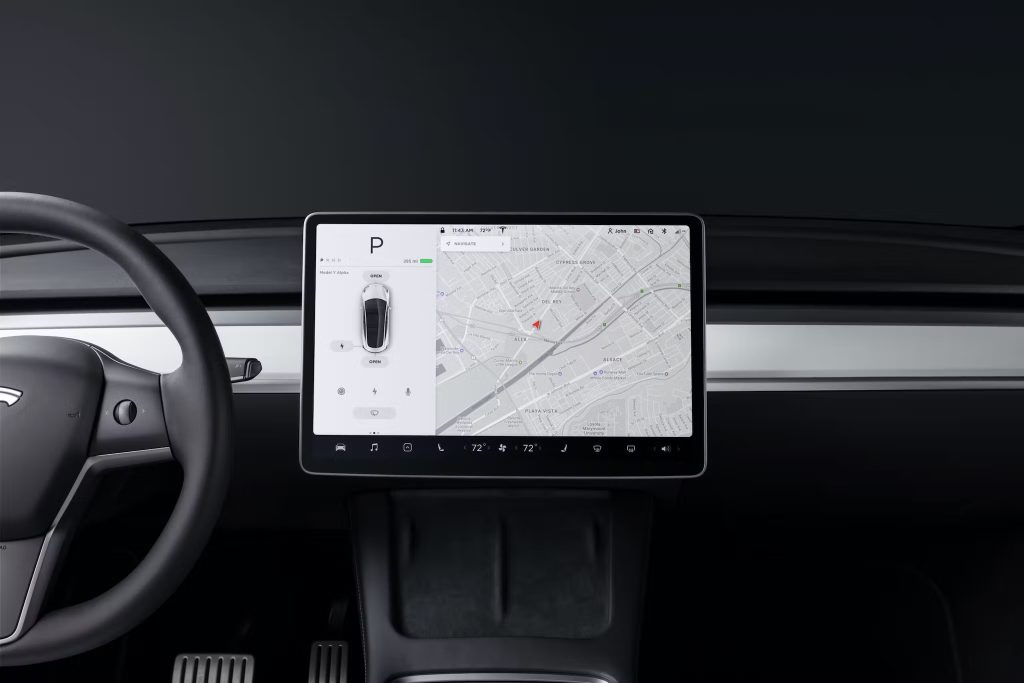
It’s worth remembering that changes meant to be improvements don’t always work out that way. Around a year ago, Tesla pushed out a major software update, V11, which rearranged many of the major components in its cars’ primary touch interface. Some owners didn’t like the change and took to popular online discussion destinations like Reddit, where complaint threads saw thousands of upvotes.
And yet, so many of us hate them
There is, of course, a healthy list of reasons why touchscreens don’t always satisfy. “Any time a driver takes their eyes away from the road, the risk of an accident climbs,” Robby DeGraff said. DeGraff is an industry analyst at AutoPacific. That risk, he notes, applies “regardless [of whether you’re] zooming in on a map or quickly checking to ensure you’ve tapped the right physical button to turn on the window defroster.”
Sure enough, last August Vi Bilägare, a Swedish consumer magazine, compared a 2005 Volvo V70 with a selection of new, touchscreen-equipped cars and looked at the distraction times when carrying out simple tasks like changing the radio station or the cabin temperature, driving at motorway speeds.
In the old Volvo, it took all of 10 seconds and the distance travelled was 306 metres. In a new MG Marvel R, an electric, family-sized SUV, it took 47 seconds and covered 1372 metres. The driver of BMW’s flagship electric car, the iX, needed 30 seconds to perform the simple tasks, taking them 928 metres. The acclaimed Hyundai Ioniq 5 took 27 seconds and 815 metres. Pin-up for the Tesla fan club, the Model 3, needed 24 seconds and 717 metres, while Volkswagen’s ID.3, clocked in at 26 seconds and 786 metres.
Nor is the problem as simple as merely looking at a screen to locate a virtual button. Many touchscreen interactions require two or more taps to access a feature or function – the driver must open a menu, then navigate a submenu, then drag a control slider to perform some task once accomplished by simply twisting a knob. A knob that could be located through muscle memory and without taking your eyes off the road. “Navigating through a maze of menus and submenus is not only time-consuming but dangerous to do in motion,” DeGraff added.
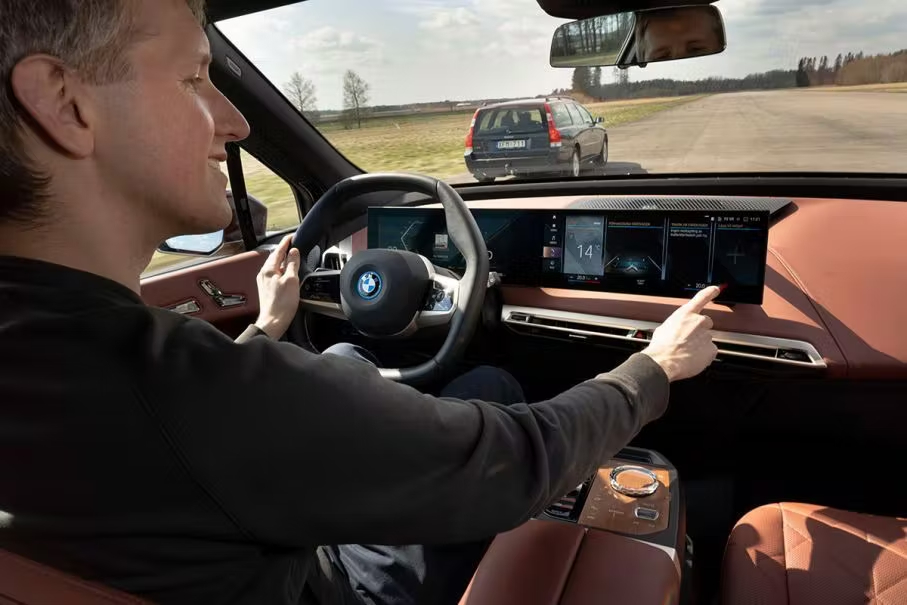
Add a bumpy road to the equation and things get even worse. “Using a touchscreen while driving is nothing like a smartphone experience,” Strategy’s Schreiner said. “There is a reach involved, at a slightly awkward angle, while traveling at 70 mph. Icon sizes need to reflect this, and interior designers need to provide anchors for the elbow and/or wrist, to allow for better use.”
If all that weren’t enough, there’s also weather. Northerners will tell you that capacitive touchscreens can be miserable to use in colder months. Fingers wrapped up in your warmest mittens? Good luck toggling the seat heaters in your Model 3.
Still, it’s getting better
At this point, touchscreens have been in cars for decades. It’s worth remembering that, while early examples were universally awful – slow, distracting, often buggy – the technology has actually improved a great deal in recent years.
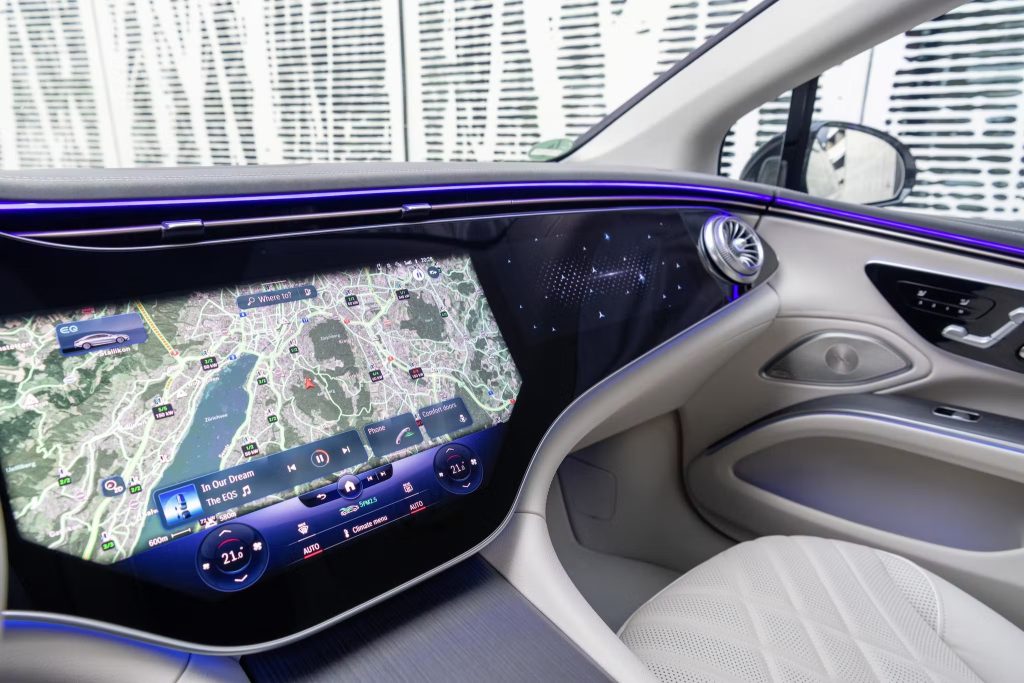
Much of that improvement comes down to hardware. Toyota’s Hill blamed slow processors and cheap displays for many of the industry’s early woes. UX designers, he noted, have also learned a lot since. A big focus now, he said, is creating responsive designs that work well on all display sizes. There is also a push to simplify things as much as possible: “The best thing we can do as designers,” Hill said, “is to be great editors – cut anything that doesn’t have significant value, and fight for simplicity on behalf of our users.”
TomTom’s Meehan spoke about “cognitive load” – the amount of thought required for a person to perform a given action. Design simplicity, he said, is crucial in reducing that load: “What’s important is that drivers know where to find important functions without having to think too much. And without having to search through deep menus, navigation structures, or hidden features.”
What comes next?
What does the future hold? Probably more touchscreens – at least in the short term. “Data from our AutoPacific 2022 Future Attribute Demand Study revealed that 29 per cent of consumers nationwide, who intend to buy a new vehicle within the next three years, want a centre screen that’s ten inches or larger,” DeGraff said. (For perspective, the current largest Apple iPad is now 10.9 inches; an iPad Mini, the bottom of the range, offers a screen around two inches smaller.)
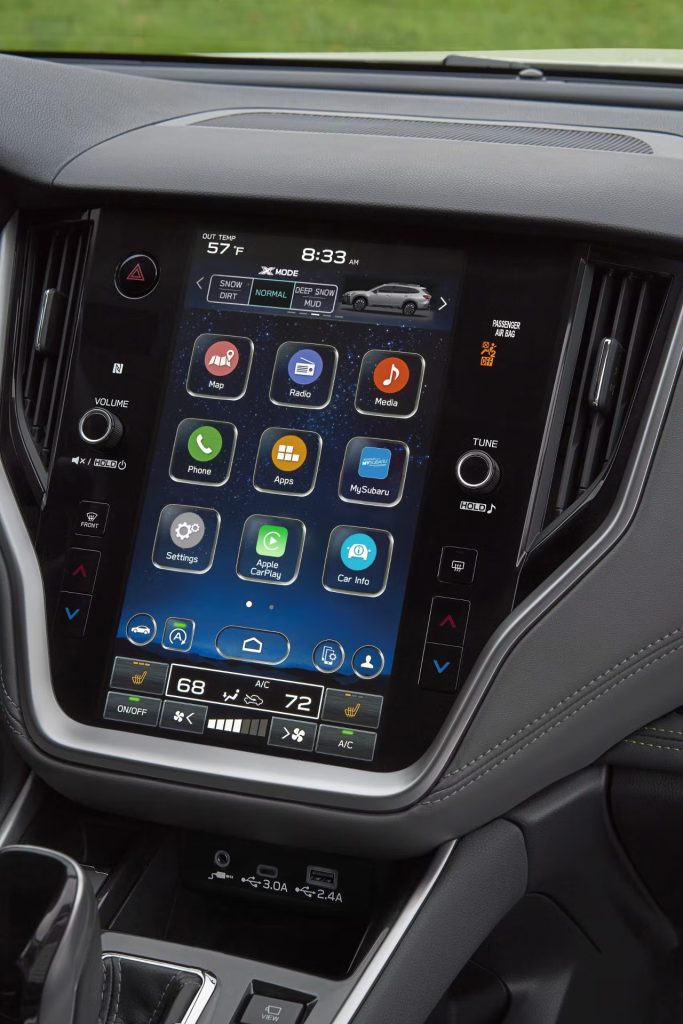
Still, DeGraff said, there is reason for optimism – we may see something of a return to physical cockpit controls. “The latest VW Golf GTI and Golf R debuted with strictly touch-capacitive surfaces for just about everything on the vehicle. It was so cumbersome, and quite frankly dangerous. Now, top brass at VW have confirmed that the car will soon [return to] physical buttons.”
TomTom’s Meehan is also optimistic. “There are quite a few design teams and leaders who are now backing off full-touchscreen systems in order to improve the user experience,” he said. “Big screens aren’t likely to go anywhere anytime soon, but over the next few years, I expect to see a slow return of physical controls for basic or repeat functions, like HVAC, lights, and media volume.”
In other words, if you’re a fan of the humble volume knob, don’t give up. There may be a little more tactility in our future after all.
Check out the Hagerty Media homepage for daily news, features, interviews and buying guides, or better still, bookmark it.


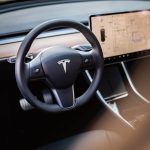







I’m right-handed and, whilst not being completely clumsy with my left hand, cannot operate my iphone well with it. Consequently, trying to operate a touchscreen left-handedly in a right-hand drive car (my car is old tech!) would be potentially dangerous.
Most touchscreens are designed by manufacturers based in countries natively producing left-hand drive cars (Japan being the major exception), where the screens are operated by the driver’s right hand. Given that 80-95% of humans are right-handed, it seems obvious to me that little has been taken into account of the difficulty many right-handers face when operating touchscreens with their left hand! Therefore the distraction level is greater in these cases.
I’m tech savvy, but strongly agree that using touch screens for basic functions can take your eyes off the road for far too long. That’s mainly why I’ve ordered an INEOS Grenadier after decades of devotion to JLR products — there are small screens, but REAL switches for turning things on and off.
The use of mobile phones is banned when driving. What’s the difference in distraction levels when fiddling with touchscreen menus? I can’t understand how manufacturers get away with fitting them under construction and use regulations.